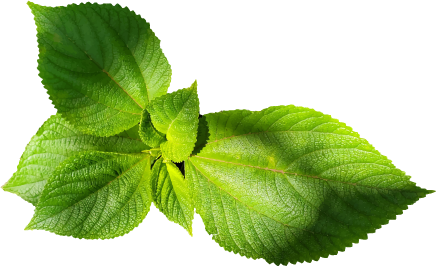Plant Information
General Information
Māmaki (Pipturus spp.) are members of the Nettle Family (Urticaceae). But unlike its mainland relatives, the majority of the gentle native genera have no painful stinging hairs.*
Other native relatives include endemics such as ʻākōlea (Boehmeria grandis), Hawaiian stingingnettle (Hesperocnide sandwicensis), five Neraudia spp., olonā (Touchardia latifolia), two Urera spp., and the indigenous pilea or Pacific island clearweed (Pilea peploides).
_____
* The exception is the Hawaiian stingingnettle (Hesperocnide sandwicensis), a rare but sometimes locally common, annual apparently with quite painful stinging hairs. It is restricted to the subalpine woodlands or alpine areas from above 5800 to over 8500 feet on the plateau between Hualālai, Mauna Loa, and Mauna Kea on Hawaiʻi Island.
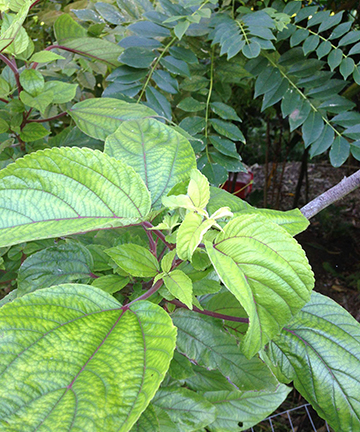

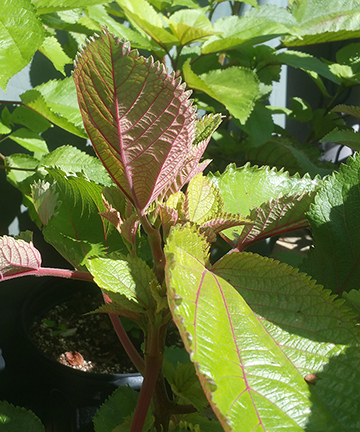
Etymology
The generic name Pipturus is derived from the Greek pipto, to fall, and oura, tail, in reference to the caducous stigma.
The specific epithet albidis is Latin for white.
Hawaiian Names:
The spellings Mamake and Māmake are incorrect. [Joel Lau, Botanist]
Waimea is a Kauaʻi name for this plant. The name is also shared by Perrottetia sandwicensis.
Background Information
Māmaki is one of the best native plants to attract the only two native butterflies Pulelehua Kamehameha or Kamehameha butterfly (Vanessa tameamea) and Koa or Blackburn butterfly (Udara blackburni)–a good reason not to spray insecticides on the plants.
There is a related species sometimes called “green māmaki.” This is ʻākōlea (Boehmeria grandis), and should not be confused with māmaki, which has different medicinal uses. [9]
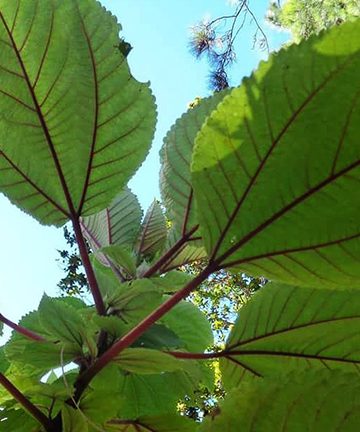
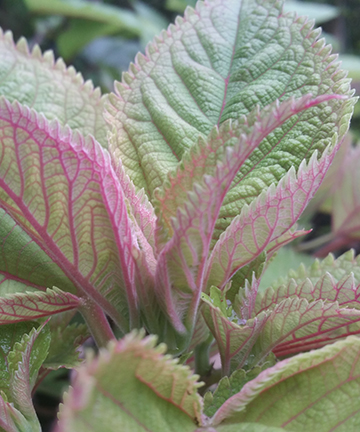
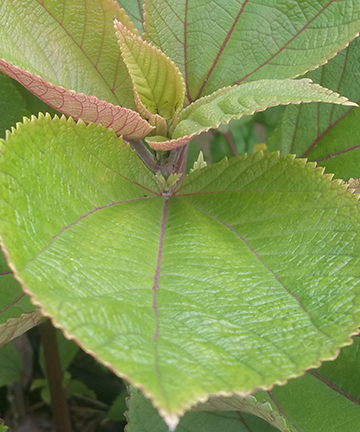
Modern Use
Dried or fresh māmaki leaves are used to make a mild but invigorating and healthy tea and one of few commercially available native herbs for consumption. The tea helps with listlessness. Māmaki leaves generally have a more pleasant aroma and taste than koʻokoʻolau. [2] The fresh or dried leaves for mamaki tea have been used to help with many internal disorders such as for the stomach, colon, bladder, liver, and bowels. [3]
Fruit is eaten as a laxative or for stomach, colon and digestive problems. [9]
Infused leaves can be used in treatment for high blood pressure, high cholesterol, liver problems, depression, bladder problems, bladder infections, and PMS. However, with some people māmaki can cause mild agitation or insomnia. [9]
Practioner David Bruce Leonard adds: “A remarkable friend, māmaki has a soothing effect on the nervous system in a similar way to jasmine tea. It works well for iritability or just to decompress after a day in Babylon.” [9]
Additional References
[1] “Plants in Hawaiian Culture” by Beatrice H. Krauss, page 64.
[2] “Plants in Hawaiian Medicine” by Beatrice H. Krauss, pages 87, 88.
[3] “Hawaiian Healing Herbs” by Kalua Kaiahua, pages 15, 27.
[4] “Native Planters in Old Hawaii–Their Life, Lore, & Environment” by E. S. Handy and Elizabeth Green Handy, page 240.
[5] “Container Gardening in Hawaii” by Janice Crowl, page 51.
[6] “Hawaiian Herbs of Medicinal Value,” by D.M. Kaaiakamanu & J.K. Akina, page 71.
[7] “Pacific Tapa” by Roger Neich & Mick Pendergrast, page 91.
[8] “Native Hawaiian Medicine–Volume III” by The Rev. Kaluna M. Kaʻaiakamanu, page 73.
[9] “Medicine at Your Feet: Healing Plants of the Hawaiian Kingdom, Volume 1,” by David Bruce Leonard, page 141-142, 143.
[10] “In Gardens of Hawaii” by Marie C. Neal, pages 318-319.
[11] “Hawai’i’s Plants and Animals–Biological Sketches of Hawaii Volcanoes National Park” by Charles P. Stone & Linda W. Pratt, pages 250-251.
[12] “Lāʻau Hawaiʻi: Traditional Hawaiian Uses of Plants” by Isabella Aiona Abbott, page 58.
[13] “Ethnobotany of Hawaii” by Beatrice H. Krauss, page 152.
